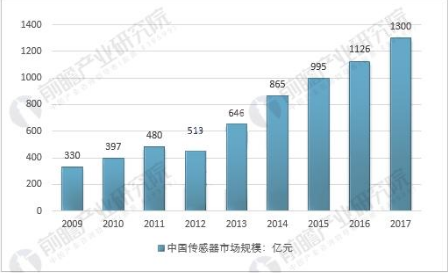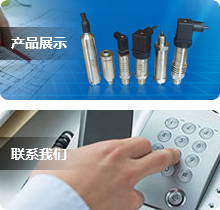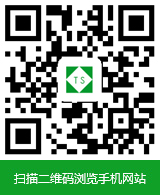由中国经济信息社江苏中心研撰的《2017-2018中国物联网发展年度报告》(下称《年报》)9月14日在无锡发布。《年报》显示,我国正兴起新一轮传感器研发热潮,市场地位逐步凸显,目前已形成较为完整的产业链。
传感器是物联网的“五官”,是用于采集各类信息并转换为特定信号的器件,也是科学技术发展的重要标志,与通信技术、计算机技术构成信息产业的三大支柱。近年来,伴随着技术的集成化趋势,传感器逐步走向模块化、微型化。
由于世界各国普遍重视对传感器投入研发,以及市场对传感器需求的增加,近年全球传感器市场保持稳步增长。2017年,全球传感器市场规模突破2000亿美元,达2075亿美元,增速达14.7%。

从市场分布来看,目前全球传感器研制生产单位超过6500家。美国、欧洲、俄罗斯各自从事传感器研究和生产厂家1000余家,日本有800余家。但GE传感器、爱默生、西门子、博世、意法半导体、霍尼韦尔、ABB、日本横河、欧姆龙、施耐德电气、E+H等美国、日本、德国的几家龙头公司占据主导地位,共占据近70%的市场份额。
与此同时,我国正兴起新一轮传感器研发热潮,与世界先进传感器技术国家间的差距逐步缩短,市场地位逐步凸显。目前,已形成较为完整的产业链,材料、器件、系统、网络等方面水平不断完善,自主品牌达6000多种。
物联网区域性产业集群不断涌现。全国近一半比例的传感器企业主要集中在长三角地区,并逐步形成以北京、上海、南京、深圳、沈阳和西安等中心城市为主的区域空间布局。
近年来,我国传感器市场持续快速增长,年均增长速度超过20%,据前瞻产业研究院发布的《中国传感器制造行业发展前景与投资预测分析报告》数据显示,2011年传感器市场规模为480亿元,到2016年达到1126亿元。2017年增长至1300亿元,同比增长15.45%。其中,流量传感器、压力传感器、温度传感器占据最大的市场份额,分别占21%、19%、14%;应用领域,工业、汽车电子、通信电子、消费电子占比最大,仅工业和汽车电子产品领域的传感器占比即达42%左右。此外,发展最快的应用领域是汽车电子和通信电子。
传感器作为物联网的心脏,发展空间巨大。物联网的系统架构一般由感知层、传输层和应用层组成,其中,感知层主要由传感器、微处理器和无线通信收发器等组成。预计到2025年物联网带来的经济效益将在2.7万亿到6.2万亿美元之间。其中,传感器作为数据采集的入口、物联网的“心脏”,将迎来巨大的发展空间。
同时由于目前国内智能传感器国外品牌占据绝大部分市场份额,国内进口产品的替代空间非常大,随着本土企业加快研发进程和智能传感器产业链布局,中国智能传感器市场未来将保持较快的发展速度,本土化率将不断提高。
The status of sensor market gradually highlights that the industry will usher in great development space.
The Annual Report on the Development of the Internet of Things in China 2017-2018 (hereinafter referred to as the "Annual Report"), published by the Jiangsu Center of China Economic Information Society, was published in Wuxi on September 14. According to the Annual Report, a new round of sensor R&D boom is emerging in China, and the market position is gradually highlighted. At present, a relatively complete industrial chain has been formed.
Sensor is the "five senses" of the Internet of Things, which is used to collect various kinds of information and convert it into specific signals. It is also an important symbol of the development of science and technology. In recent years, with the trend of integration of technology, sensors are gradually moving towards modularization and miniaturization.
The global sensor market has maintained a steady growth in recent years due to the worldwide emphasis on the research and development of sensors and the increasing demand for sensors in the market. In 2017, the global sensor market size exceeded US $200 billion, reaching US $207 billion 500 million, with a growth rate of 14.7%.
From the perspective of market distribution, there are more than 6500 global sensor production and production units. The United States, Europe and Russia respectively engage in sensor research and production of more than 1000 manufacturers, Japan has more than 800. But GE sensors, Emerson, Siemens, Bosch, Italian-French Semiconductor, Honeywell, ABB, Yokogawa, Omron, Schneider Electric, E+H and other leading companies in the United States, Japan, Germany occupy a total of nearly 70% of the market share.
At the same time, a new round of research and development upsurge of sensors is emerging in China, the gap between China and the advanced sensor technology countries is gradually shortened, and the market position is gradually highlighted. At present, a relatively complete industrial chain has been formed, and the level of materials, devices, systems and networks has been constantly improved, with more than 6000 independent brands.
The regional industrial clusters of the Internet of things have sprung up. Nearly half of the sensor enterprises in China are mainly concentrated in the Yangtze River Delta region, and gradually form a regional spatial layout with Beijing, Shanghai, Nanjing, Shenzhen, Shenyang and Xi'an as the main cities.
In recent years, China's sensor market continues to grow rapidly, with an average annual growth rate of more than 20%. According to the "China Sensor Manufacturing Industry Development Prospects and Investment Forecast Analysis Report" issued by Prospective Industry Research Institute, the sensor market size in 2011 was 48 billion yuan, and reached 112.6 billion yuan by 2016. In 2017, it increased to 130 billion yuan, an increase of 15.45% over the same period last year. Among them, flow sensors, pressure sensors, temperature sensors occupy the largest market share, accounting for 21%, 19%, 14% respectively; in the application field, industry, automotive electronics, communications electronics, consumer electronics accounted for the largest proportion, only the industrial and automotive electronics products in the field of sensors accounted for about 42%. In addition, the fastest growing areas of application are automotive electronics and communications electronics.
As the heart of the Internet of things, sensors have huge room for development. The system architecture of the Internet of Things is generally composed of perception layer, transmission layer and application layer. The perception layer is mainly composed of sensors, microprocessors and wireless communication transceivers. It is estimated that the economic benefits of the Internet of things will be between 2 trillion and 700 billion and 6 trillion and 200 billion dollars by 2025. Among them, sensors as the entrance of data acquisition, the "heart" of the Internet of Things, will usher in a huge space for development.
At the same time, due to the current domestic smart sensor foreign brands occupy the majority of the market share, the domestic imported products have a very large space for substitution. With the accelerated development process of local enterprises and smart sensor industry chain layout, China's smart sensor market will maintain a relatively rapid development rate in the future, the localization rate will continue to increase.




